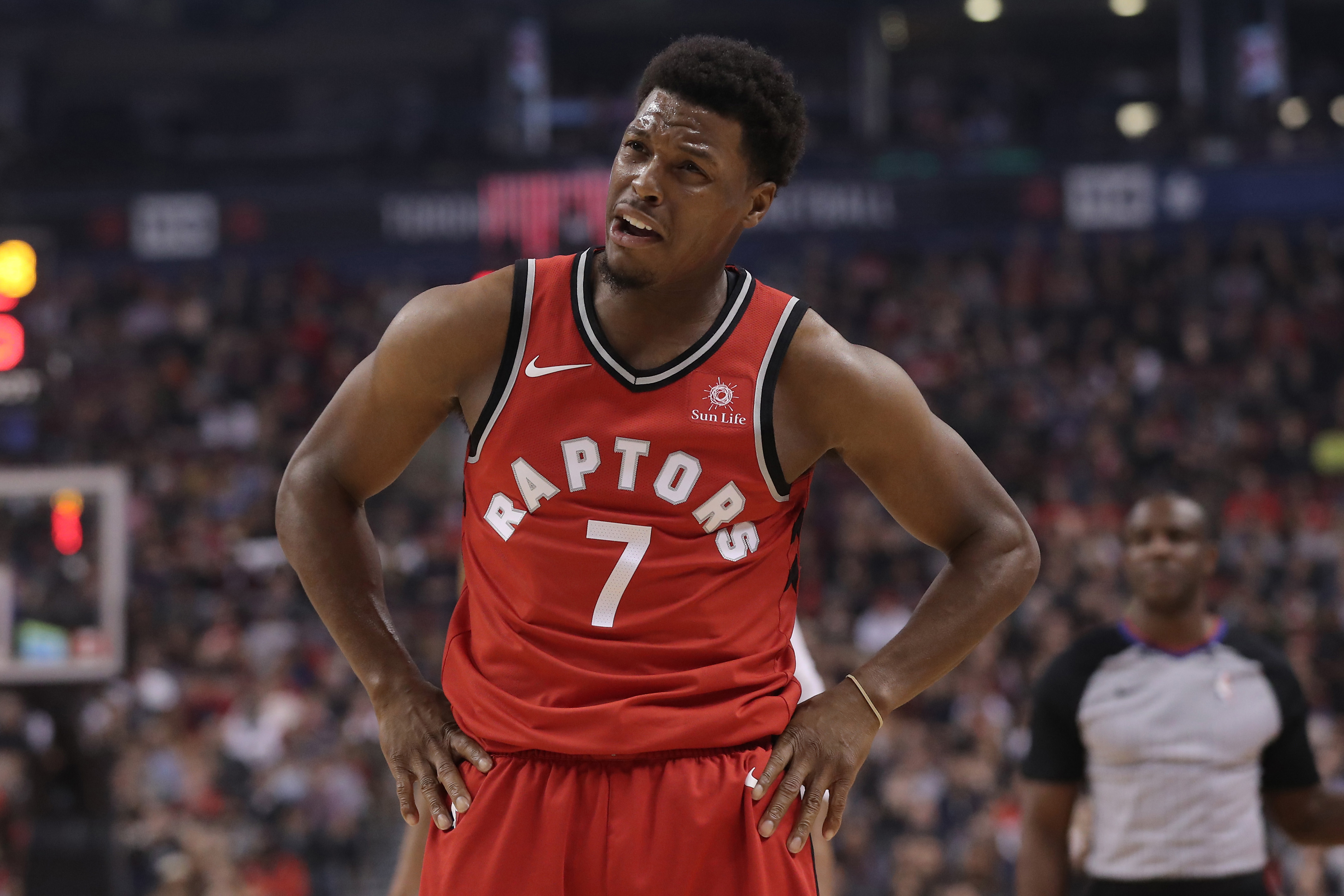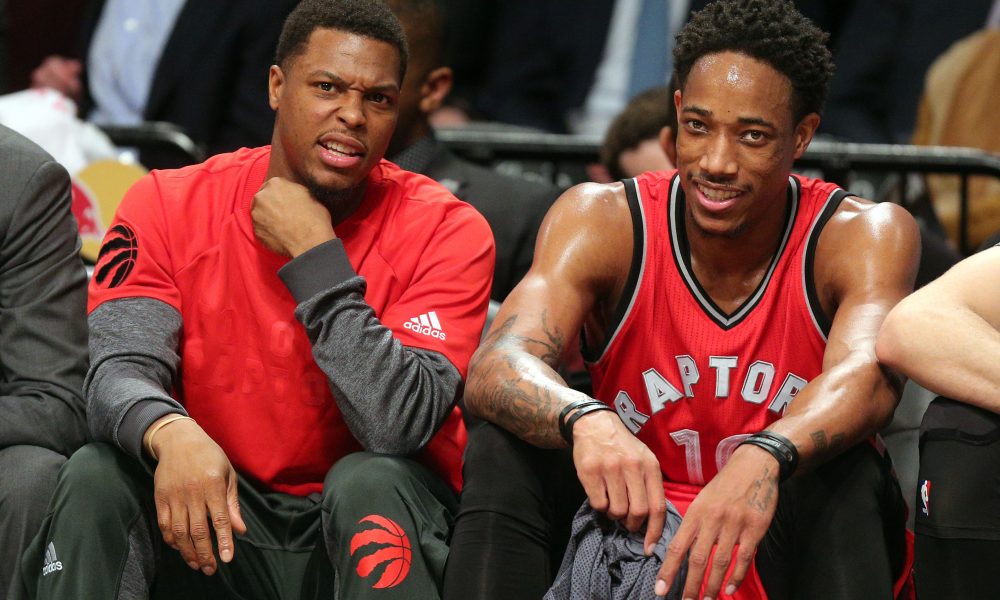Note: This is a guest post from Samson Folk.
On a Sunday afternoon in Sacramento, Kyle Lowry found himself guarded by Frank Mason III at the 3-point line. Seeing Mason’s hand hanging out in front of him, Lowry swung his arms through it, drawing a foul before hitting from long-range. Lowry made sure everyone understood as he counted out “one, two, three.” He didn’t seem at all deterred by Mason III’s hand; it was just another barrier for him to break through, a casual four-point play on another day in the life of one of the NBA’s elite.
There is something called “Raptors Twitter.” It’s a sub-genre of a larger group called “NBA Twitter.” The former is a collective of Raptors fans who argue/discuss/celebrate things, always related to the Raptors. It can be a toxic environment – this year it is riddled with Jonas Valanciunas debates (which are hardly ever beneficial, or original), and in years past we’ve had the Terrence Ross > DeMar DeRozan debates, Patrick Patterson should start takes, and all of the James Johnson talk anyone could handle. After the playoff series against Washington in 2014-15, thousands of people clamoured for Dwane Casey to lose his job. Basically, it’s a lot of fans who are invested in the team. There are a few staples in this community; William Lou’s “10 things”, Blake Murphy’s measured takes, Eric Koreen’s satirical and nihilistic commentary, and Zach Harper’s nickname for Kyle Lowry, born way back in the days of Daily Dime Live – KLOE (Kyle Lowry Over Everything).
‘KLOE’ has grown to be so much more than a nickname. Lowry, for a large part of the last five years, has been one of the NBA’s top 15 players. If this is a shock to you, chances are you don’t put much stock in advanced stats or watch the Raptors often enough. Everything about Lowry seems underrated, and at a glance, you would have a very tough time placing him as one of the league’s elite. It’s only when you watch him take a charge every other game (more often than that lately) from a 6’10” big man rumbling down the lane, when you see him take off down the court in transition and elevate for a pull-up 3 when the team is down seven with five minutes left; and on the next play when his defender goes under the screen, he hits another three from deep. You see it when LeBron James tries to post him up and passes out of his clear mismatch, because for some insane reason, be it will power or Lowry’s ridiculous booty, he will not give an inch.
For the second year in a row, Lowry has had a slow, if not ineffective start. He’s not the defender he used to be – he’s still quite effective attacking loose balls and stripping bigs in the lane – so his play wasn’t necessarily buoyed by his defensive efforts. He struggled heavily shooting from the field, and from three. The great play from the five-man bench limited the minutes Lowry would usually play with the reserves, a group he often put up prolific numbers with. Keeping in mind that small point guards historically struggle soon after turning 30, accounting for his age and his start, things didn’t look good for him.
Early on in the year, DeMar DeRozan was the backbone of the Raptors offense, and alternatively they relied heavily on their bench unit to extend (or take back) leads in the second quarter. In the first 10 games of the year, Lowry was sub-40 percent from the field and 3-point range. In spite of all these things, Lowry miraculously still had a positive net rating (he does all of the subtle, small things so well), and the Raptors stayed afloat.
One of the coolest developments of this season, is that Lowry is rebounding like a madman, possibly in response to his early offensive struggles. He’s grabbing a robust 6.3 boards per game, and plucking 19 percent of all available defensive rebounds when he’s on the floor. Lowry is the NBA’s third best rebounder at the guard position, and he’s falling in behind Russell Westbrook (6’4”), and Lonzo Ball (6’5”). This is unprecedented for a guard his size. He helps the Raptors get started in transition, and has made his teammate Pascal Siakam far more valuable, as he finds him in the open floor for easy baskets. If Siakam can contribute offensively, the Raptors get to play him more often, which is great, because he may be their best defender.
So far this year, Lowry’s free-throw attempts have fallen off significantly, though. Partly due to his early season slump and partly due to the change in offense (more motion heavy offense), Lowry was having difficulties finding his spots to attack with the ball in his hands less. An important development in Steph Curry’s career was when he became an elite off-ball threat, which is something that Lowry keeps getting better at. Lowry is spending more time with the ball out of his hands, and by proxy is getting easier looks when he’s attacking a shifting defense. The longer he operates off the ball, the better he is finding the openings that are afforded to him by the motion offense.
This year, Lowry is scoring the lowest amount of unassisted 2-point baskets of his tenure with Toronto – only 31.4 percent of his twos have been unassisted. In addition to that, he’s getting far more spot-up opportunities in the corners, and he’s been deadly from there (55 percent). He’s long thrived in a pseudo-spot-up roll when alongside another point guard, and when he plays with Fred VanVleet (plus-minus god), they register a net rating of +20.6 per 100 possessions.
The height of the rim never changes, and it will always be tough for smaller players to finish at the rim, Kyle Lowry being 6-foot, the difficulty of every shot in the paint goes up. He’s got a great toolkit to go to, often times finishing on the opposite foot to throw-off the timing of his defender, taking large hop-steps into the bodies of bigger players to make sure they can’t jump to contest, or changing his pace with his hesitation dribble he has no problem shedding defenders with. This has culminated with him shooting 65 percent at the rim this season, right in line with last year despite the less friendly whistle.
He’s lowered his usage rate by a fair amount (from 25 percent to 21 percent), he’s playing nearly five minutes less per game, and in that time he’s hitting as many threes as last year, on the best percentage of his career (.417). When things turned around, they really turned around. Lowry started hitting from three at one the league’s best clips, and he hasn’t been shy about it. Since October ended, over 67 percent of Lowry’s shot attempts have come from downtown. This has opened up driving lanes for him, and he’s getting blocked at the rim three times less than he was in October. Even though Lowry started out slow, he was posting the highest true-shooting percentage of his career until his slump relapsed over the last two games (at 59.6 percent, it’s still the second-best true-shooting percentage of his career, the free throws-for-threes trade-off working mostly fine). If there’s a concern, it’s been the inconsistency in Lowry’s ability to score when the 3-ball isn’t dropping, but the comfort with Lowry is that non-scoring contributions or a late-game takeover is never far around the corner.
With a lot stacked up against him, Lowry continues to succeed, and on top of that, set career bests. As for this year, Lowry is once again one of the usual suspects when looking at leaders in box score plus-minus (11th), win shares per-48 minutes (16th), and value over replacement player (11th). This is nothing new, as he hasn’t fallen out of the top 20 in any of the above categories since the 2015-16 season begun. When we think he may be falling off, it’s the calm before the storm. We’ll never be able to analyze him perfectly, so luckily enough we have a saying that can capture his meaning to the Raptors; Kyle Lowry Over Everything, ‘KLOE.’
Note: This is a guest post from Samson Folk.




